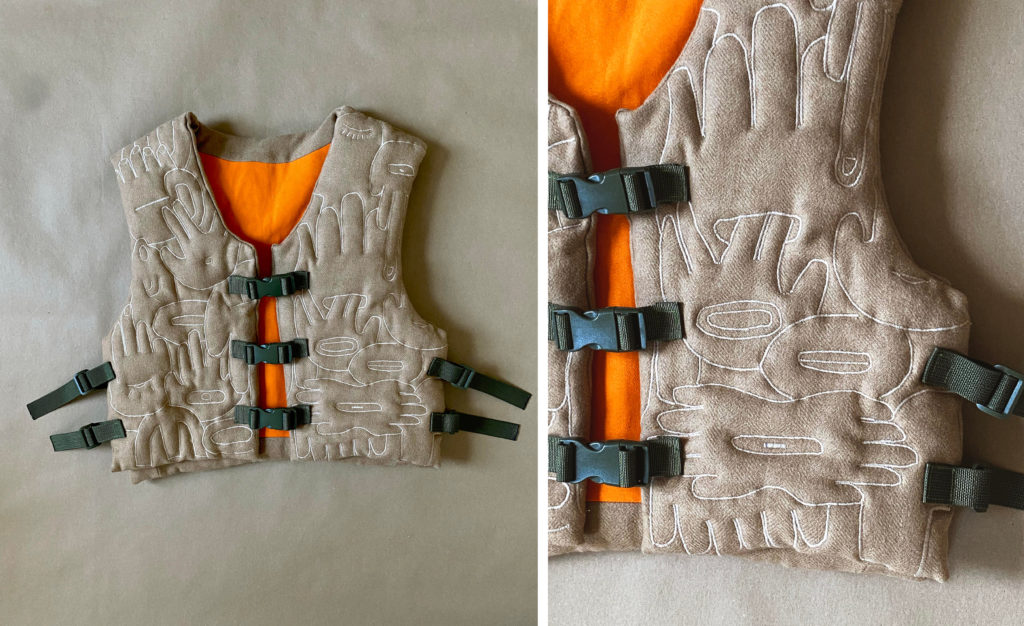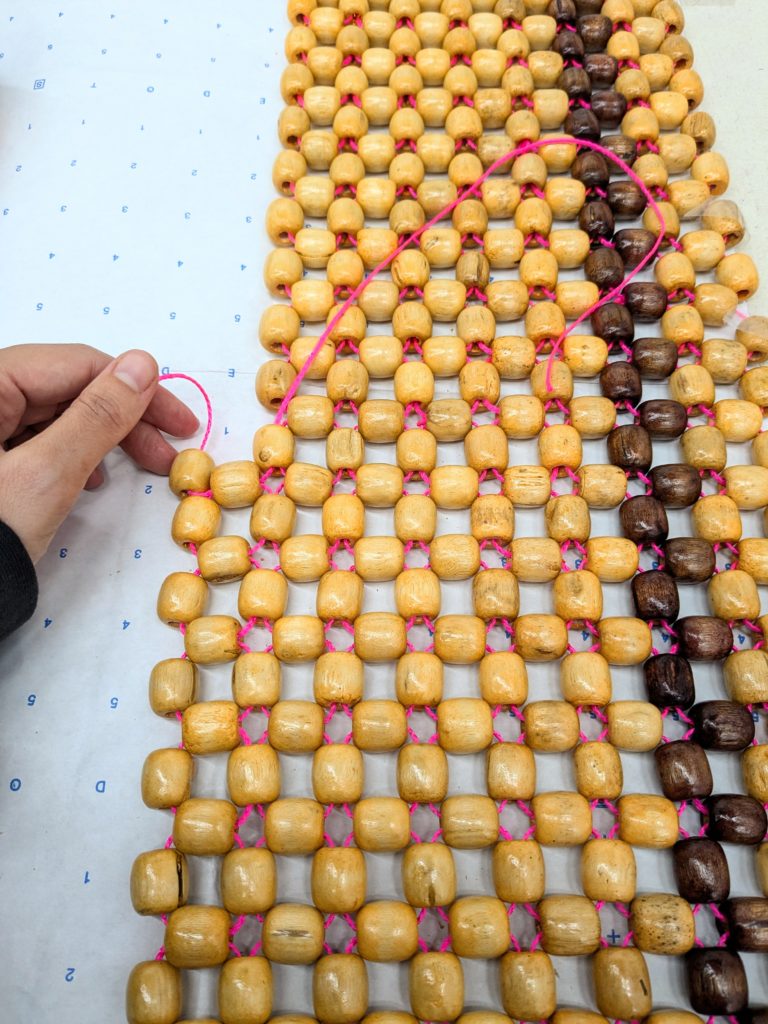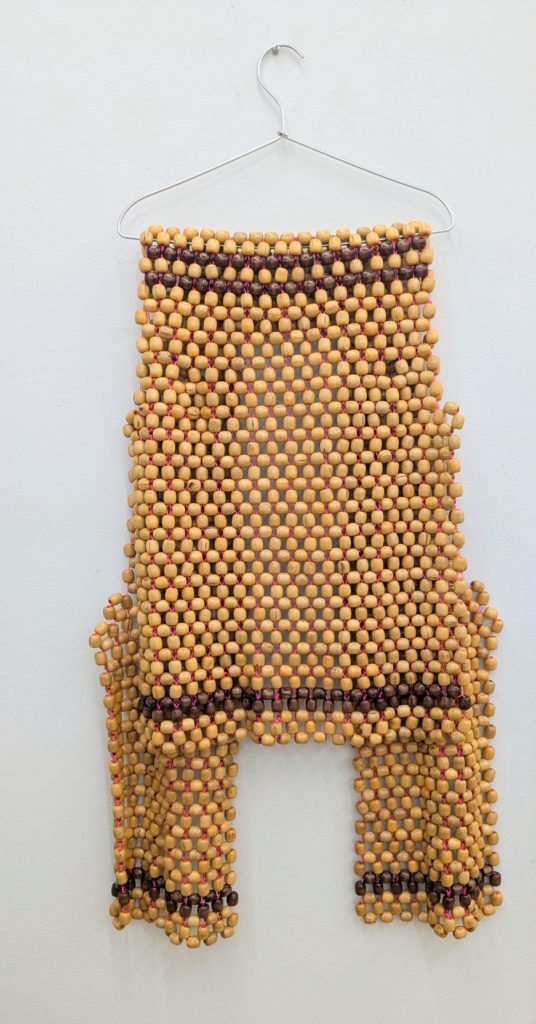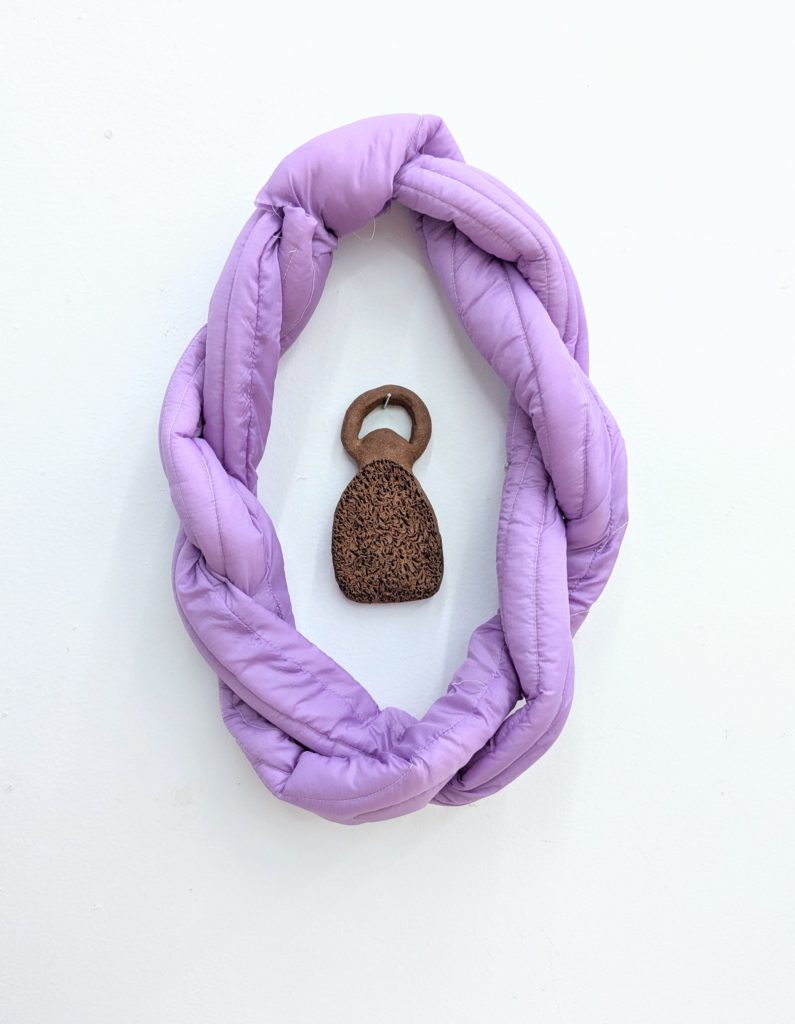WIP Artist Highlight: Hilla Shapira
Julie Schumacher, Artist Programs intern at TAC, got together with June WIP resident Hilla Shapira:
Please share with me a bit about your art practice.
I’m a fiber and multidisciplinary artist—the primary material I work with is textiles. My work focuses on wearables, sometimes it’s clothing for a performance, if I collaborate or for my own performance pieces, or for installations or sculptural pieces. Usually, I use soft materials, but I also work with other kinds of materials, such as ceramic, wood, and metals. When I think about my work, I focus a lot on the everyday object. Clothing has a very intimate relationship to our body, and I see them like an object that has so much charge with history, culture, intimacy, relationship to gender, culture—all of these things are embedded in visuals, aesthetics, and materiality. I'm very interested in this kind of information, and what I can do with it. How can I manipulate it? How can I question social norms from my perspective as a queer person who is coming from an area of conflict, as an immigrant, as a woman living in this world.
How does your work differ when in an exhibition space versus a performance space?
Some of my work involves collaborating with dance studios, dance companies, and choreographers —I’ve been doing these collaborations since 2015. In these collaborations, my aesthetic is often shaped by working closely with the choreographer or the artists themselves. I also make performance pieces that are more object-related, so I make objects that can be sculptural but can also be manipulated with activation. Then I usually will bring my performers. I'm playing the art director and the designer at the same time, and the focus is on the object itself and how objects activate a space. Every time it's a little bit different. So this is one side of my work. But right now, at Textile Arts Center, I'm focused on creating more sculptural pieces. I'm thinking a lot about rituals and spiritual objects. I'm thinking about the function of spirituality in the object from today's cultural perspective—from the contemporary eye.

Is this part of an ongoing project, or is this something that you just started exploring a little bit more while you were at the Textile Arts Center?
It's an ongoing project. I'm recognizing an object that may look mundane, for instance, a tank top, a T-shirt, or a jacket; or, in the Jewish world, different symbols, like the hamsa and menorah. And I'm taking those symbols and the graphic language aesthetic, and I'm thinking: What makes them powerful? We use them, and we see them everywhere, but we never question them. We never think: What does it mean?
Then I start making some changes. Maybe the function of the menorah is not only to hold the candles—maybe its spirituality is about the iconic part of it. So how can I queer this kind of symbol? How can I queer the idea of hamsa? Looking at the Jewish tradition today, especially what's happening now, from my perspective, as a queer person, as an immigrant not living in Israel anymore, I look at how those symbols are manipulated and used by systems of power, like the Israeli government. How can I take those symbols and question them and change them in a way that is more related to queer experience and contemporary Jewish experience? Maybe I can reclaim the discourse around those symbols and objects.
I'm looking at those things, I'm collecting imagery of symbols, patterns, textures, materiality, and then asking: what if? What if I change the direction? What if I change the scale? What if? And what does that mean? What if it's not functioning the same way it's supposed to function but it still has its charged symbolism.

Can you talk more about the works you are creating during your WIP residency this month at TAC?
I'm working now on creating textile surfaces from wooden beads into patterns that eventually will be a wooden-beaded jacket that will hang on the wall. I'm imagining a liquidity aesthetic of the material and the heaviness of the material when it is hung. I also work on transparent coat cases—in combination with the wooden beads. I've been thinking about peels and peelings—like, the thing that covers something…maybe the object that we don't really care about, and how can I highlight this object. And, if it's transparent, what can I put inside. Maybe I’ll take a garment apart and put it inside. I think of it like I’m in a lab—I'm trying different kinds of variations of the same object. I have a transparent green material, and I plan to make a coat case from it— I want to try different objects or materials inside.
I'm also thinking about combining ceramics pieces next to my textile objects and trying them together in different compositions. The pieces will not necessarily be activated, but I create them with the idea of a ritual in my mind.

Can you share a little bit about the workshop you’re hosting at Textile Arts Center on June 23?
We will talk about pockets—their history in Western Europe and the United States, as well as the ideas surrounding pockets connected to our garments, including their origins and how they are linked to binary thinking in the design of everyday objects. Just to give you a little background: The first time that pockets were introduced to women's wear was only the beginning of the 20th century in the Suffragist suit. It was tiny, but it was the first time they were connected to the garment. Women held pockets before, but that was a different kind of object, separate from the garment. And a lot of political changes, including the French Revolution, really changed women's wear—and sometimes limited women in different ways—and pockets play a big part in this. I think it's fascinating because it's an object that is very designed for function, but the designs can say so much about the culture, including how we see gender in our culture. Or just very small pockets. My goal is to ask why this was happening. Not from a judgmental place, but just to understand where it comes from. After this short overview, I will show people how to make two different kinds of pockets. They can choose if they want to have a separate pocket, like a pouch worn on the clothes, or they can connect the pocket to a garment they bring.

Hilla Shapira is a wearable and textile artist. Originally from Tel-Aviv, Israel, and is currently based in Brooklyn, NY. Her work deals with the relationships between common design and body regimen. By making functional mundane objects she questions design norms and the political aspects of things. She has presented her work in Israel, Europe, and the USA including: Art Basel (Miami, FL), Philadelphia Museum of Jewish Art (Philadelphia, PA), NY Textile Month (NYC, NY), Jerusalem Design Week (Jerusalem, Israel), NY Jewelry week (NYC, NY), Little Berlin Gallery, (Philadelphia, PA), Depo2015 (Pilsen, Czech Republic), Neve Schechter Gallery (Tel-Aviv, Israel), Hansen House (Jerusalem, Israel), Textile Arts Center (Brooklyn, NY) and Wasserman Projects (Detroit, MI). She was AIR in Carrizozo residency (Carrizozo, NM), Popps Packing (Hamtramck, MI), Makerspace (Brooklyn, NY) and Neve Schechter center (Tel-Aviv, Israel). She received her BFA in Fashion from Bezalel Academy, Jerusalem, Israel and her MFA in Fiber from Cranbrook Academy, Bloomfield-Hills MI, USA. Shapira's work had been featured in different publications including: Hyperallergic Magazine, NY Jewish Week, Metalsmith Magazine, Portfolio Magazine, Haaretz, and the Jerusalem Post.